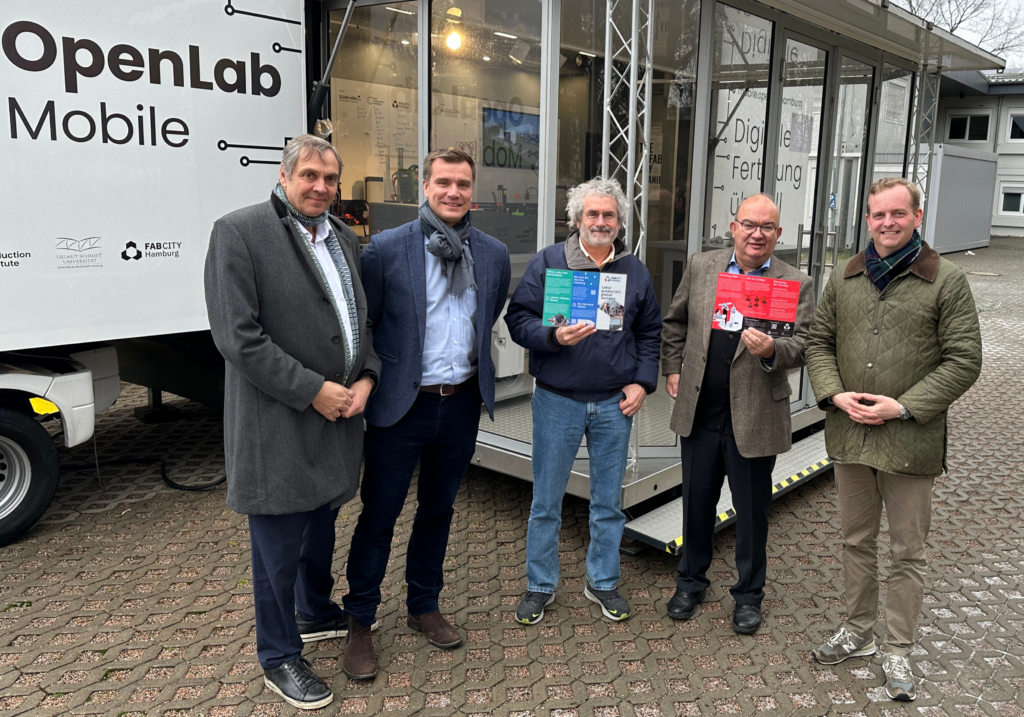As part of a forward-looking sustainability-project the Helmut-Schmidt-Universität/University of the Armed Forces Hamburg (HSU/UniBw H) is now cooperating with the Massachusetts Institute of Technology (MIT) Center of Bits and Atoms. Prof. Klaus Beckmann, President of the HSU/UniBw H, and Prof. Neil Gershenfeld, Head of the MIT Center for Bits and Atoms, just signed the treaty in Hamburg.

Locally produced. Globally connected. The Fab City project aims to establish resilient and sustainable cities by pursuing an integrative approach. This approach includes the sharing of knowledge within a global network and the systematic characterization of infrastructure technologies for local production.
Focussing local production
One focus is on developing and scaling a broad range of capabilities relevant to local production in key areas such as food, energy and shelter. This is where the new cooperation between the New Production Institute headed by Dr.–Ing. Tobias Redlich at the Laboratory for Production Technology (LaFT) at HSU/Uni Bw H and the Massachusetts Institute of Technology (MIT) Center for Bits and Atoms headed by Prof. Neil Gershenfeld comes in. A multidisciplinary team from HSU and MIT is researching new technologies within various domains.
Quantifying the flow of energy and material
This also includes cataloguing the best methods for Fab City technologies, including the areas of manufacturing machines, measuring instruments, materials, furniture, clothing, consumer electronics, toys, data networks, robots and transport. The development of innovative ideas to quantify material and energy-flows coming in and going out of a city, costs and benefits, productivity and scalability, as well as metrics to identify priorities relevant to the future of Fab Cities is crucial.